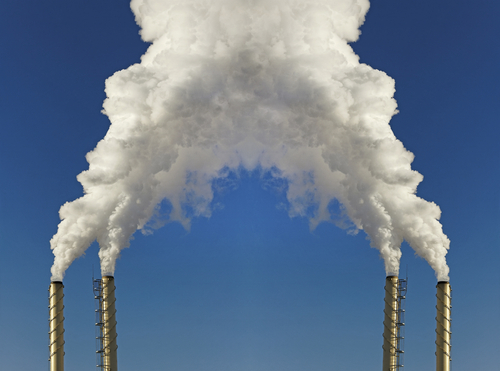Global Methane Initiative—A Trash to Treasure Story, Part 2
 |
The United States is a very active partner in the GMI and in keeping with the original targeted areas of focus, has created four voluntary industry programs to address methane as an emission and as an energy source. Here is a look at the programs and their accomplishments.
The Ag Star Program is jointly sponsored by the EPA and the Departments of Agriculture and Energy and “promotes investments in alternative energy technologies by encouraging the development and adoption of anaerobic digestion (AD) technology in the livestock sector.” As of November 2014, the Program estimates a total of about 244 AD systems in operation at commercial livestock farms nationwide, up from 239 in 2013. These include 199 systems at dairy farms, 39 at swine farms, 8 at beef farms, 8 at mixed farms, and 6 at poultry farms.
According to the EPA, “In 2013, AD systems directly reduced emissions by an estimated 2.06 million metric tons of CO2 equivalent (MMTCO2e) and approximately 0.47 MMTCO2e was avoided, producing a total emission reduction of 2.53 MMTCO2e.” In addition, the Program claims, “Approximately 840 million kilowatt hours (kWh) equivalent of energy was generated by AD systems on livestock farms during 2013.” In total, the emissions reductions were equivalent to the CO2 emissions of 2,717,508,056 pounds of coal burned.
Join us for our Managing Solid Waste webinar on January 28 to learn how to build or improve your solid waste program, reduce management costs, and increase the profitability of your facility’s solid waste. Learn more.
The Coalbed Methane Outreach Program (CMOP) focuses primarily on mitigating emissions of coal mine methane (CMM) from underground coal mines, “both from degasification systems and from mine ventilation systems, as well as from abandoned (closed) underground mines and active surface mines.” According to the EPA data for 2012, U.S. CMOP accomplishments include:
- Twenty-six operating coal mine methane projects: 14 using drained gas from active underground mines, 2 mitigating dilute ventilation air methane (VAM) at active underground mines, and 10 using abandoned mine methane gas,
- Reduced CMM emissions by 8.4 MMTCO2e in 2012, and
- Cumulative reductions in CMM emissions since the program began in 1994 total an estimated 140.2 MMTCO2e.
The CMOP has also developed new technical reports and outreach materials for coal companies, project developers, and industry stakeholders, and continues proactive efforts with coal mines and industry to increase CMM project development.
Managing Solid Waste: How to Maximize Profit by Analyzing Your Waste Streams Better
Analyze how your organization manages solid waste streams so you can reduce costs and increase profitability Space is limited, so register now.
The Landfill Methane Outreach Program’s (LMOP) goal is to reduce methane emissions by encouraging recovery and use of landfill gas (LFG), which is about 50 percent methane. In 2012, municipal solid waste (MSW) landfills, which are the third largest manmade source of U.S. methane emissions, released “an estimated 83.1 million metric tons of CO2 equivalent … to the atmosphere….” However, according to the EPA, “As of July 2014, there are 636 operational LFG energy projects in the United States and approximately 440 landfills that are good candidates for projects.”
The EPA also notes that, “Of the 2,400 or so currently operating or recently closed MSW landfills in the United States, about 590 have LFG utilization projects.” If the approximately 440 additional MSW landfills considered to be “good candidates” were to turn their LFG into energy, it would provide enough electricity to power almost 530,000 homes.
The Natural Gas Star Program partners currently represent more than 50 percent of the U.S. natural gas industry. Overall, the Program encourages adoption of “cost-effective technologies and practices that improve operational efficiency and reduce emissions of methane” in oil and gas operations. According to the EPA, the Program celebrated 20 years in 2014 with the following achievements by sector*:
- Oil Production—54 billion cubic feet (Bcf) of methane emissions reductions in 2012, and a total of 819.4 Bcf since 1990,
- Gathering and Processing—1 Bcf of methane emissions reductions in 2012, and a total of 48 Bcf since 1990,
- Transmission—10 Bcf of methane emissions reductions in 2012, and a total of 255.9 Bcf since 1993, and
- Distribution—1 Bcf of methane emissions reductions in 2012, and a total of 45.4 Bcf since 1993.
In total, the EPA notes that the 2012 emissions reductions were equivalent to the additional revenue of more than $264 million in natural gas sales (assuming an average natural gas price of $4.00 per thousand cubic feet).
*Inventory of U.S. Greenhouse Gas Emissions and Sinks 1990–2012, USEPA, April 2014.
